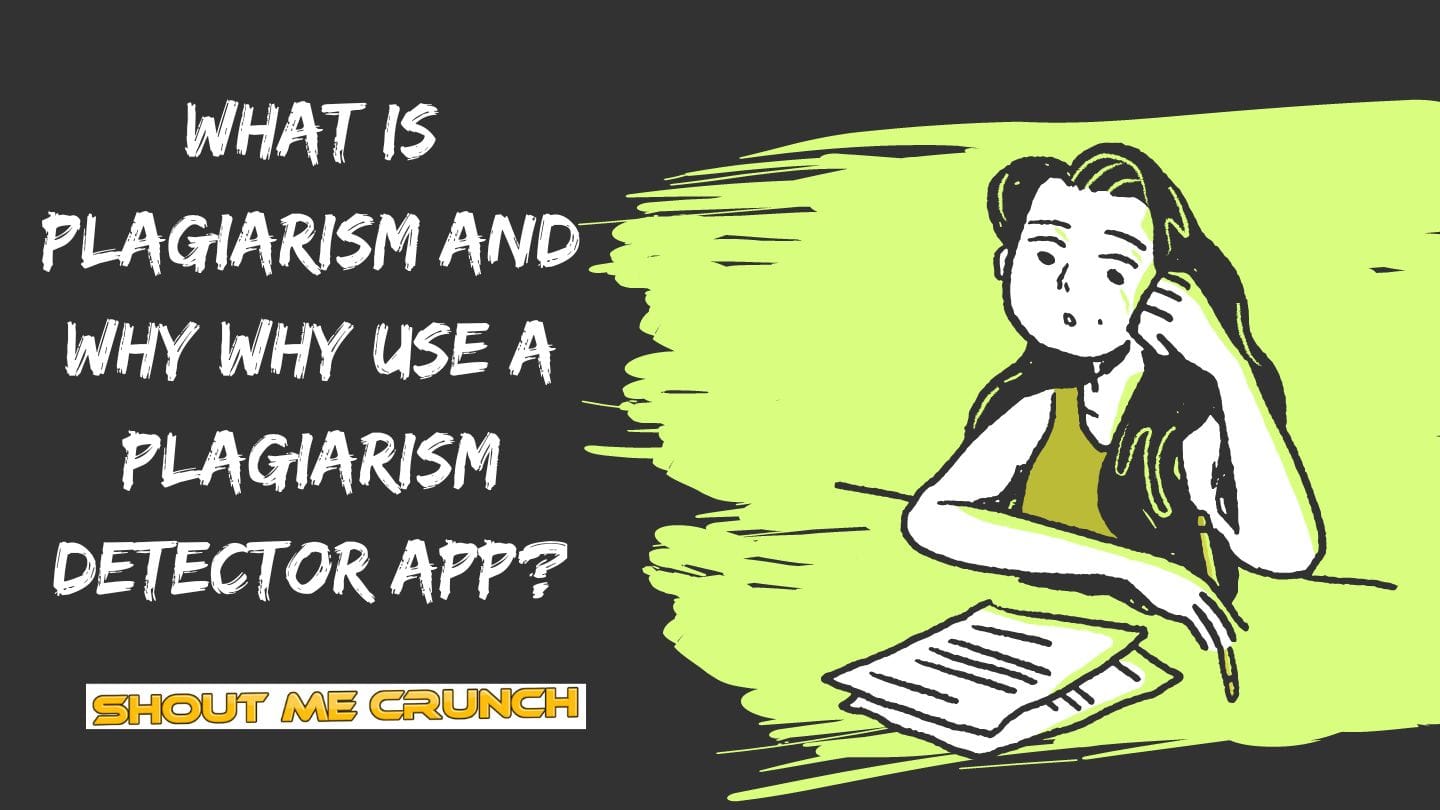The meaning of plagiarism
Presenting someone else’s ideas or work as one’s own while failing to credit or recognize the source properly is plagiarism. This can include using content copied and pasted from a source, paraphrasing without accurate citation, borrowing ideas without credit, or turning in work that has already been turned in for another project or course.
Plagiarism is regarded as a serious academic infraction and can have repercussions like failing an assignment, a course or even getting kicked out of school. Students, researchers, and writers should always give credit where credit is due and grasp what plagiarism means.
The importance of talking about plagiarism
Nowadays, since the material is readily available online, it is more important than ever to talk about plagiarism. It can be tempting for students, researchers, and writers to copy and paste content without providing correct references or attribution due to the volume of information available online. However, doing so compromises academic integrity and diminishes the worth of novel insights and creative research.
Plagiarism can have major effects, such as legal repercussions and reputation damage; when people are encouraged to accept responsibility for their work and properly credit the sources that have affected their ideas, a culture of academic honesty and integrity can be fostered. It can also assist people in learning the right methods of citation and paraphrasing, which are crucial abilities for success in school and life.
A brief explanation of the Plagiarism Detector app
A program that can scan essays, research papers, or other written pieces to look for plagiarism is called a plagiarism detector. To find any overlaps in terminology, phrasing, or sentence structure between the material under consideration and a database of previously published texts, the plagiarism checker App compares them. If any matches are discovered, the software underlines the potentially questionable parts and offers a report indicating the proportion of the text that is believed to be plagiarized.
Some programs that detect plagiarism also offer potential sources for allegedly plagiarized content. For students, instructors, researchers, and writers, these apps can be useful in ensuring the originality of their work and preventing accidental plagiarism. To ensure academic integrity, it is crucial to remember that these apps are not infallible and should only be used as a supplement to correct citation and paraphrasing practices.
Plagiarism Types
Plagiarism comes in several different ways that can be distinguished.
The first type of plagiarism is direct plagiarism, which entails duplicating someone else’s work directly without giving due credit or attribution.
The next type of plagiarism is self-plagiarism, in which a person submits their prior work for a new assignment without their consent or recognition. Another kind of plagiarism is paraphrasing, in which the original text is rewritten without making enough modifications, and the source is still not cited.
Mosaic plagiarism is another type of plagiarism that involves integrating fragments from different sources into a new work without crediting the sources.
Lastly, accidental plagiarism happens unintentionally due to a failure to adequately document sources or a lack of understanding of proper citation. Individuals must be aware of these various forms of plagiarism to avoid academic dishonesty and sustain ethical writing standards.
Read How Augmented Writing Tools Help You in Creating Job Descriptions?
The Repercussions of Plagiarism
Plagiarism has serious repercussions on both the academic and professional fronts. Plagiarism can have serious consequences when it occurs in a learning environment. Students detected plagiarizing may be subject to sanctions including failing a course, obtaining a poor score on an assignment, or even being expelled from school. Academic institutions take plagiarism seriously because it compromises learning and research validity. Furthermore, damaging one’s reputation from plagiarism can have a long-lasting impact on one’s higher education and employment opportunities.

Plagiarism can have negative effects on one’s career in an equal measure. Originality and ethical behavior are highly regarded in many different professions. A professional’s credibility, reputation, and career prospects may suffer if they are found to have plagiarized. Legal repercussions may also result from plagiarism, particularly when copyrighted content is utilized without authorization. People or organizations guilty of plagiarism may face legal action and financial penalties.
It is critical to understand that plagiarism stunts intellectual and personal development and harms the work’s original authors. By plagiarizing, people forfeit the chance to educate themselves, develop their critical thinking skills, and offer their original insights to the academic and professional worlds. Therefore, to succeed personally and professionally, one must be aware of the effects of plagiarism and follow the rules of academic honesty and ethical writing.
The Advantages And Disadvantages Of Using A Plagiarism Detector App
| Advantages | Disadvantages |
| 1. Helps identify instances of unintentional plagiarism. | 3. Some apps require a subscription or payment for full feature access. |
| 2. Promotes academic integrity and originality. | 2. Limited effectiveness in detecting paraphrased or heavily modified content. |
| 3. Provides a quick and efficient method to check for plagiarism. | 4. Over-reliance on the app can lead to poor critical thinking skills. |
| 4. Suggests potential sources for cited material. | 4. Over-reliance on the app can lead to a lack of critical thinking skills. |
| 5. Offers a visual representation of plagiarized text, aiding understanding. | 3. Some apps require a subscription or payment for full-feature access. |
| 6. Saves time in manual comparison against multiple sources. | 6. Limited or inaccurate database of sources may lead to missed instances of plagiarism. |
| 7. Helps students and writers learn proper citation and referencing techniques. | 7. Some apps may not provide detailed explanations or educational resources for improving writing skills. |
| 8. Assists in maintaining academic integrity for large institutions with numerous submissions. | 8. Privacy concerns may arise, as some apps store submitted work for analysis. |
| 9. Supports educators in efficiently grading and providing feedback on work. | 9. Nonexistent or inadequate customer support for technical issues or inquiries. |
| 10. Raises awareness about the importance of originality and avoiding plagiarism. | 10. Incomplete or incorrect results can lead to a false sense of security or missed instances of plagiarism. |
Apps for Detecting Plagiarism by Type
Free Plagiarism Checker:
- Grammarly Plagiarism Checker (https://www.grammarly.com/plagiarism-checker)
- SmallSEOTools Plagiarism Checker (https://smallseotools.com/plagiarism-checker/)
- DupliChecker (https://www.duplichecker.com/)
- Plagscan (https://www.plagscan.com/)
- Quetext (https://www.quetext.com/)
- Copyscape (https://www.copyscape.com/)
- Prepostseo Plagiarism Checker (https://www.prepostseo.com/plagiarism-checker)
- Plagiarisma (https://www.plagiarisma.net/)
- BibMe (https://www.bibme.org/)
- Skandy — Online Plagiarism Checker (https://skandy.co/plagiarism-checker-app)
Please be aware that there may be differences in the capabilities and accessibility of these plagiarism detection software programs or websites, and some may restrict free usage or provide extra-paid services.
Paid Plagiarism Checker:
Here’s a short list of some of the best-paid plagiarism detector apps or websites:
- Turnitin (https://www.turnitin.com/)
- Grammarly Premium (https://www.grammarly.com/premium)
- Copyscape Premium (https://www.copyscape.com/premium.php)
- Plagscan (https://www.plagscan.com/pricing)
- Quetext Pro (https://www.quetext.com/plagiarism-checker)
- Urkund (https://www.urkund.com/)
- iThenticate (https://www.ithenticate.com/)
These commercial plagiarism detector systems frequently include extra capabilities, in-depth analysis, and integration with educational or publishing platforms. It’s worth mentioning that price and subscription options for each service may differ, so visiting their separate websites for more information is advised.

Before purchasing a plagiarism detector app, what characteristics should we check for?
There are several important characteristics to think over when buying a plagiarism detector app:
Accuracy: Look for a plagiarism detection program that is highly accurate. Effectively detecting both direct and indirect plagiarism should be possible.
Plagiarism Sources: Check the source database used by the app to compare submitted text against plagiarism. A large and varied database will improve the app’s capacity to identify copied text from various sources.
Compatibility: Check the app’s compatibility with the languages and file types you often use. It should support a large variety of file types to handle various kinds of material.
User Interface and Navigational Ease: Consider the app’s user interface and navigational ease. It must have an easy-to-use interface and offer detailed directions for conducting plagiarism checks.
Reporting and Analysis: Finding an app that offers thorough reports and analyses of the found plagiarism is important. It should be possible to easily identify and correct the marked portions or sentences by the way that it highlights them.
Integration: Check for compatibility and possible integrations to integrate the app with other platforms or tools, such as learning management systems or word processors.
Privacy and Security: Consider the app’s data security measures and privacy policy. Ensure the app respects your privacy and doesn’t store or utilize the content you submit inappropriately.
Customer Support: Check the availability and caliber of customer support. You can get assistance from a knowledgeable and accommodating customer support staff with technical questions or problems.
Pricing and Subscription Plans: Consider the app’s subscription options and pricing model. Think about the value for the money and whether it fits your needs and budget.
Other Features: Some plagiarism-detecting apps provide more features like grammar and spelling checks, writing recommendations, or help with citations. If these supplementary features fit your needs, consider them.
By paying close attention to these aspects, you can choose a plagiarism detector app that best meets your needs and tastes.
Read Why You Should Outsource Content Writing
Conclusion
Maintaining academic integrity, encouraging originality, and respecting ethical standards depend on avoiding plagiarism. Credit is provided when credit is due while upholding other people’s intellectual property. By avoiding plagiarism, people advance their knowledge, showcase their critical thinking abilities, and establish integrity and professionalism. It promotes a climate of integrity, equity, and respect within and outside the academy.
In conclusion, plagiarism is misrepresenting the author or source of an idea or work. It is a major violation that compromises the values of originality and academic honesty. Plagiarism can have serious implications, such as academic sanctions, legal repercussions, and reputational harm.
People can use plagiarism detector applications to ensure their work is credible and original. These apps offer a quick and easy way to check for instances of plagiarism, assisting users in recognizing accidental plagiarism, mastering suitable citation styles, and upholding academic integrity.
Using such tools, people show their dedication to honesty, encourage inventiveness, and support a tradition of moral writing in academic and professional settings. In the end, employing plagiarism detector software is a proactive step toward creating an environment that values intellectual progress, trust, and respect.


